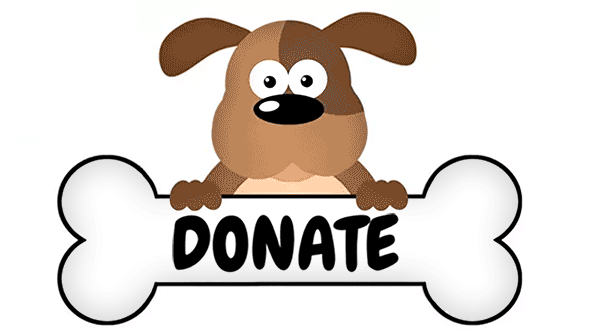What Your Dog Needs
Every dog is unique, but there are some general reasons why dogs misbehave. We dog parents are failing to give our dogs something they need.
Dogs need exercise. Dogs have energy that needs to be spent somewhere, and you don’t want it to be in your house! Keep in mind, though, that letting your dog out in the yard by himself or taking leisurely walks are not exercise. If there is a compatible play mate in your neighborhood, arrange for play dates, instead of risking your dog’s health and well-being at dog parks. Don’t discount the exercise your dog can get playing with you. Toss a ball, blow bubbles, teach your dog to “find it” or try a dog sport. For ideas and motivation, look at 101 Ways To Do More With Your Dog by Kyra Sundance or Fitness Unleashed: A Dog and Owner’s Guide to Losing Weight and Gaining Health Together by Marty Becker, DVM and Robert Kushner, MD.
Dogs need mental stimulation. This is one of many reasons to take your dog to positive training classes and to make training cues part of your daily routine. Toys are another source of stimulation. Try interactive toys, like the Dog Pyramid or the Everlasting Treat Ball. You put hard treats inside these toys, and your dog has to move the toy around to figure out how to get the treats out. Doggie PhD’s can work up to the more complicated Nina Ottosson puzzle toys, like the Dog Finder or Dog Brick. Show your dog how much fun these toys can be and rotate them, so there’s always something new to play with. Trick training is also a great way for your dog to use his brain. 101 Dog Tricks by Kyra Sundance offers step-by-step instructions with illustrations.
Dogs need to feel safe. Dogs need to learn trust above all else. Help them feel safe by not forcing them into situations beyond their ability to cope. Go slowly. Introduce your dog to one person at a time. Ask that person not to approach your dog, but to wait for your dog to approach. “Listen” to your dog. He will let you know when he’s ready to meet the big, wide world. Some may always be timid, and never be ready. Others will show their fear with an aggressive display. These are the times to advocate for your dog. If your dog has confidence in your ability to protect him, instead of pushing him forward, your dog will feel less need to protect himself.
Dogs need a teacher. Dogs need you to teach them how you want them to behave in your daily lives. You can’t expect your dog to simply understand what you want and then get angry when he doesn’t do it. Teaching does not mean jerking, hitting, or pinning down your dog. Your dog will feel more secure if he has a trusting relationship with you. Look at how you may be inadvertently reinforcing the exact behavior you don’t want. When your dog barks for a treat, do you give it to him? If so, you are teaching him to bark. Do you give your dog attention, whether petting or pushing him away, when he jumps on you? You have just taught him to jump. Ignore behaviors you don’t want, and reinforce those you do.
Dogs need consistency. Dogs need to figure out what you want them to do, and they can only do that if you and everyone in your household are consistent. You have to all decide which rooms your dog can be in, whether he can get on the sofa, and what words to use for training cues. If “down” means lie down to you and get off the bed to your partner, how is your dog supposed to know what “down” means? And if you don’t want your dog to jump on people, you can’t let him jump on your child in play. That will only confuse him.
Dogs need companionship. They are social animals. Dogs will misbehave, jumping on you or grabbing your things, if that’s what it takes to get your attention. Start praising and petting your dog when he is lying quietly next to you. Reward good behavior not just in training, but all the time. When you crate your dog, it should be in an area of the house with a lot of activity, not in an isolated area of the basement. If you’re gone all day at work, you may want to hire a dog walker or use in-home day care, so your dog isn’t alone all day. In either case, be careful who spends time with your dog. If they don’t know about dog behavior and language or if they use punishment, choke and prong collars, you may be harming your dog. Corporate day care, in particular, may have too many dogs in one room for the staff present, as well as high turnover and poor training.
Dogs need to chew. They need quality food without a lot of fillers. They need chew toys, like Kongs, Nylabones, sterile bones, or Galileo bones. Kongs come in various chewing strengths. You can put peanut butter, cottage cheese, wet kibble, or any of the “recipes” on the Kong website in Kongs and freeze them. You can also fill a sterile bone or soak a Nylabone for fifteen minutes in chicken or beef broth to make them more appealing. If you see your dog chewing something inappropriate, interrupt him with a noise, like a clap, and give him an acceptable alternative. Adult dogs chew less than puppies, but dogs chew all their lives. So, close your doors, put your shoes away, confine your dog when you’re not home, and stop blaming the dog for chewing your things!
Dogs need good associations. If, when you call your dog, you give him a treat, he will start to come when you call him. If you feed and play with your fearful dog when a stranger approaches, he will start to associate seeing a stranger with good things happening. This is how you teach dogs behaviors that you want. It’s much better than yanking your dog with a choke chain or punishing him for not behaving. When you punish your dog, you may be harming your relationship; he likely won’t know what he is being punished for; you haven’t taught him an alternate behavior; and you may end up discouraging a behavior that you actually want. Here are two examples: Your dog runs off. You call him. He eventually comes, but you punish him for running off in the first place. Next time you call him, your dog is more likely to avoid you. Or your dog feels a choke or prong collar when he shows curiosity and pulls toward a child. Your dog may now associate children with the pain or discomfort he feels and learns to be afraid of and react to children.
Puppies need socialization. Socializing your puppy can help prevent his becoming a fearful, and possibly aggressive, dog. Before four months old, expose your puppy to new situations. Help him have good experiences with men, women, children, teenagers, dogs, and cats. Teach children how to approach your puppy; ask strangers to give him a treat; let him play with your friends’ healthy, vaccinated dogs; and take him to puppy kindergarten. Remember, though, that socialization is not the same as exposure. Whether you have a puppy or an adopted dog, it’s a mistake to force your pup beyond his comfort level, take him into uncontrolled situations (like dog parks) or get him around crowds (kids’ soccer games) in the name of “socialization”. You want him to be relaxed, not overwhelmed and stressed.




